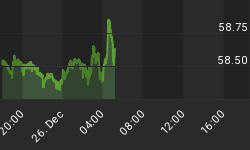Here is a summary of my tweets after the CPI release this morning. You can follow me @inflation_guy.
-
CPI +0.1%/+0.1% core, y/y core to 1.8%. Core only slightly weaker than expected as it rounded down to 0.1% rather than up to 0.2%.
-
Housing CPI was weak, second month in a row. Rents will eventually catch up w/ housing prices...but not yet.
-
Apparel CPI was weak after a couple of strong up months. I'll have the whole breakdown in a bit.
-
Core was actually only 0.13%, suggesting last August's 0.06% and this August's number might merely be bad seasonals.
-
Market was only looking for 0.17% or so, so it's not a HUGE miss. Still disappointing to my forecasts as upturn in rents remains overdue.
-
Core CPI now 1.766% y/y. More difficult comparison next month although still <0.2%.
-
Accelerating major grps: Apparel, Medical Care, Educ/Comm, Other (20.9%); decel: Food/Bev, Housing(!), Transp (73.1%), unch: Recreation
-
Housing deceleration actually isn't worrisome. Primary rents were 3.0% y/y vs 2.8% last. OER was 2.23% vs 2.19% last.
-
Housing subcomponent drag was from lodging away from home, household energy, other minor pieces. So housing inflation story still intact.
-
Core services inflation unch at 2.4% y/y; core goods inflation up to 0% from -0.2%. Source of uptick: mean reversion in core goods.
-
So OER still reaches a new cycle high at 2.23%...it's just not accelerating yet as fast as I expect it to. Lags are hard!
The initial reading of this number, as the tweet timeline above shows, was negative. The figure was weaker-than-expected, and Housing CPI decelerated from 2.26% to 2.17%. This seemed to be a painful blow to my thesis, which is that rising home prices will pass through into housing inflation (expressed in rents) and push core inflation much higher than economists currently expect.
Housing CPI is one of eight major subgroups of CPI, the other seven being Food and Beverages, Medical Care, Transportation, Apparel, Recreation, Education and Communication, and Other. Housing receives the most weight, at 41% of the consumption basket and an even heavier weight in core inflation. So, a deceleration in Housing makes it very hard for core inflation to increase, and vice-versa. If you can get the direction of Housing CPI right, then you'll have a leg up in your medium-term inflation forecast (although it isn't very helpful in terms of projecting month-to-month numbers, which are mostly noise). Thus, the deceleration in Housing seemed discouraging.
But on closer inspection, the main portions of Housing CPI are doing about what I expected them to do. Primary Rents (aka "Rent of primary residence") is now above 3%, in sharp contrast to the expectations of those economists and observers who thought that active investor interest in buying vacant homes would drive up the price of housing but drive down the price of rents. Though I never thought that was likely...the substitution effect is very strong...it was a plausible enough story that it was worth considering and watching out for. But in the event, primary rents are clearly rising, and accelerating, and Owners' Equivalent Rent is also rising although less-obviously accelerating (see Chart, source BLS).

So, it is much less clear upon further review that this is a terribly encouraging CPI figure. It is running behind my expectations for the pace of the acceleration, but it is clearly meeting my expectations for what should be driving inflation higher. As I say above, econometric lags are hard - they are tendencies only, and in this case the lags have been slightly longer, or the acceleration somewhat muted, from what would typically have been expected from the behavior of home prices. Some of that may be from the "investors producing too many rental units" effect, or it might simply be chance. In any event, the ultimate picture hasn't changed. Core inflation will continue to rise for some time, and will be well above 2% and probably 3% before the Fed's actions have any meaningful effect on slowing the increase.
You can follow me @inflation_guy!
Enduring Investments is a registered investment adviser that specializes in solving inflation-related problems. Fill out the contact form at http://www.EnduringInvestments.com/contact and we will send you our latest Quarterly Inflation Outlook. And if you make sure to put your physical mailing address in the "comment" section of the contact form, we will also send you a copy of Michael Ashton's book "Maestro, My Ass!"















